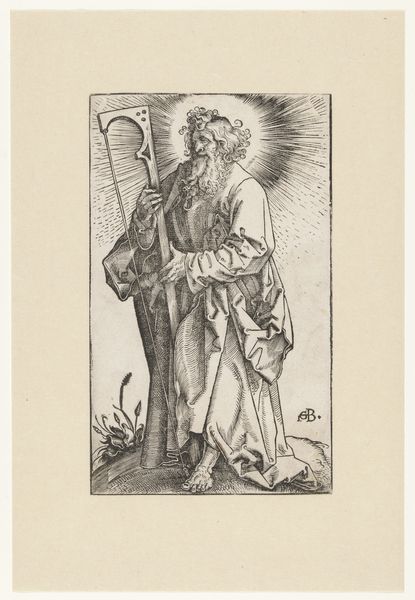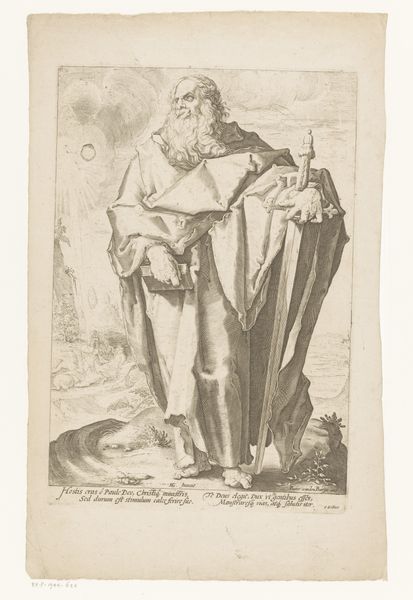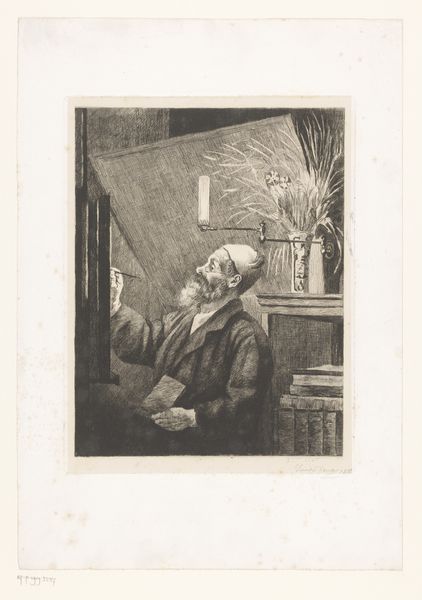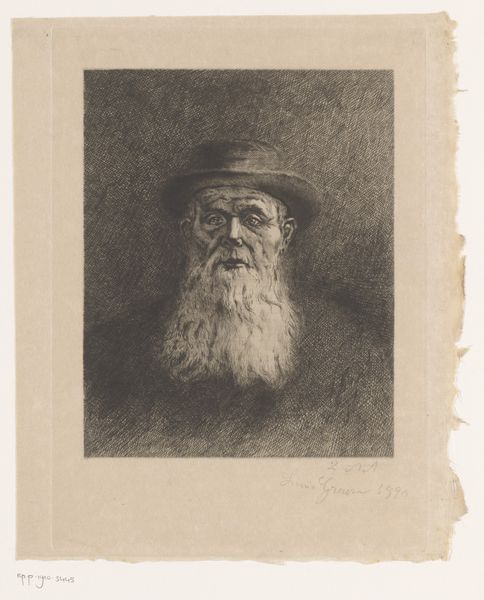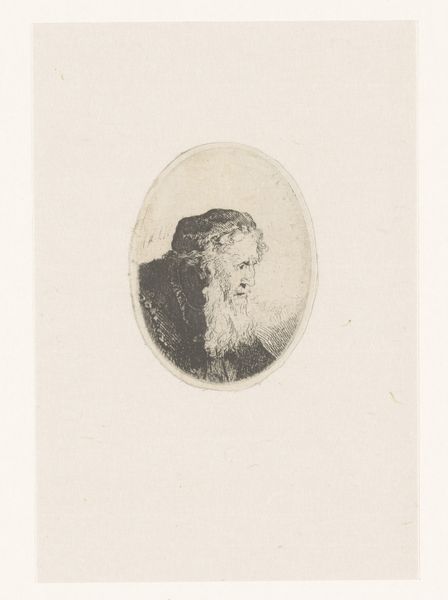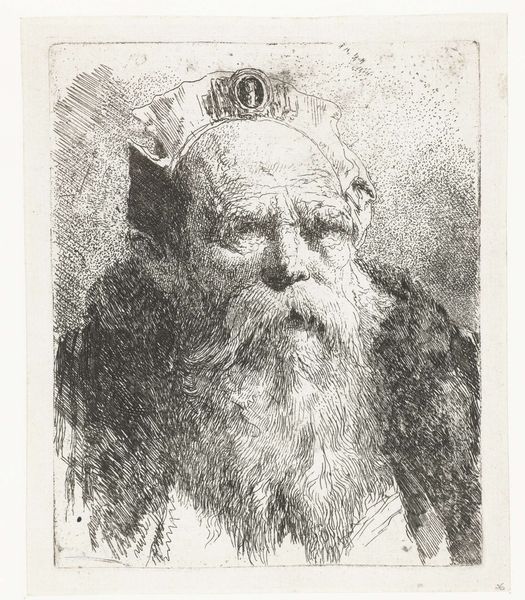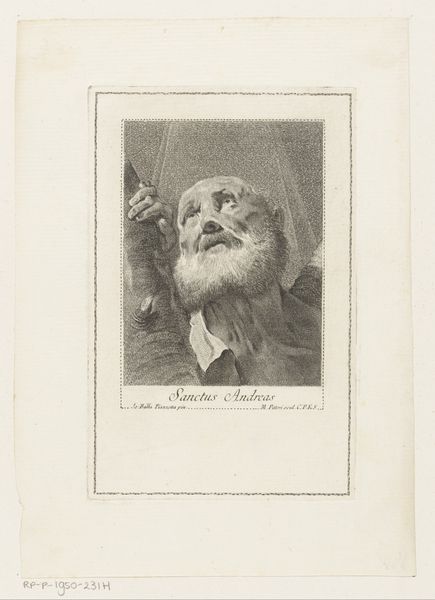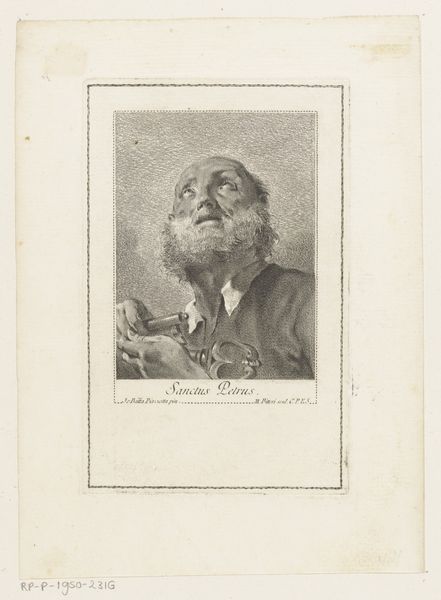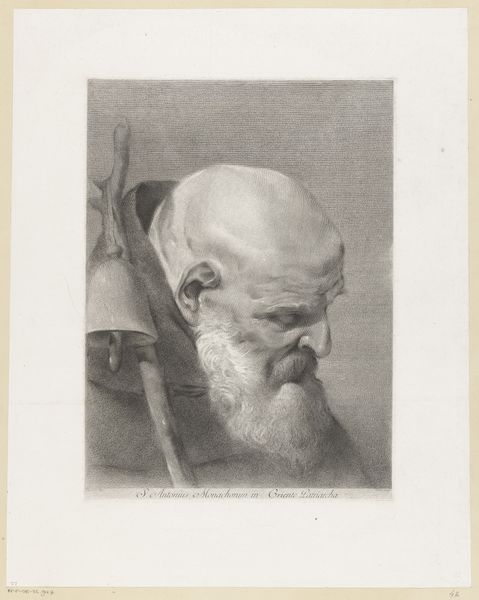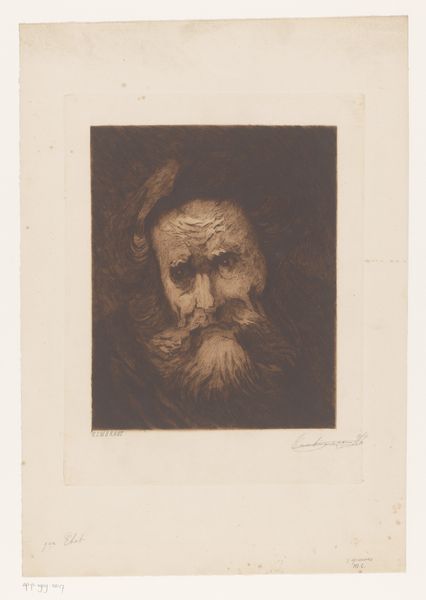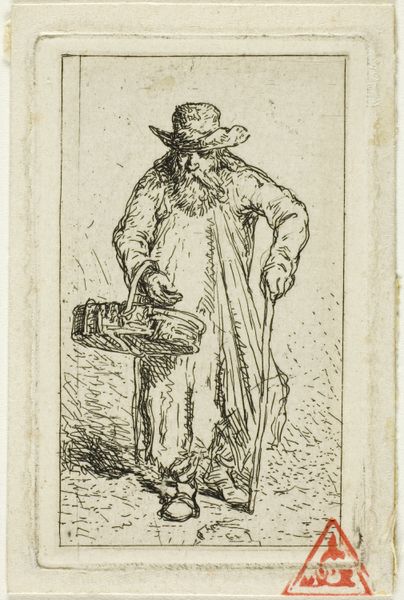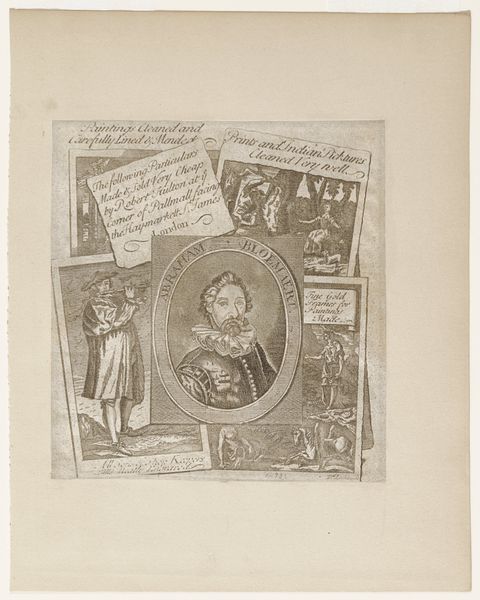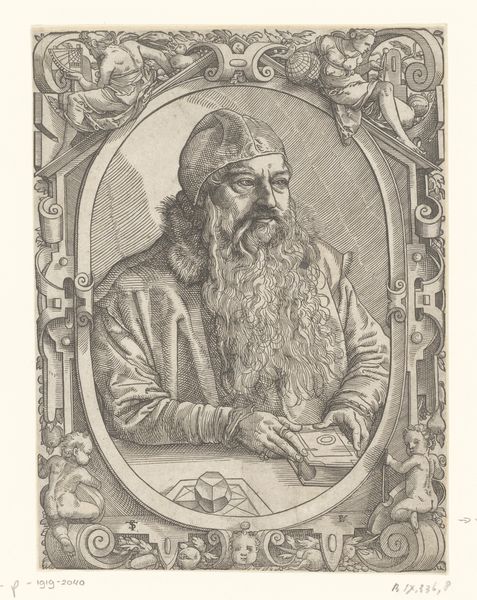
print, paper, engraving
#
portrait
#
baroque
# print
#
paper
#
engraving
Dimensions: height 123 mm, width 84 mm
Copyright: Rijks Museum: Open Domain
This is Rudolf Füssli’s “Portret van Dietrich Meyer”, an etching made sometime in the late 18th century. Etching is a printmaking process that uses acid to create lines in a metal plate. First, the plate is coated with a waxy, acid-resistant material. The artist then scratches an image into this coating, exposing the metal underneath. When the plate is dipped in acid, the exposed lines are eaten away, creating grooves. The deeper the lines, the more ink they hold. The plate is then inked, wiped clean, and pressed onto paper, transferring the image. Look closely, and you'll see the fine lines that define Meyer's face and beard, the textures of his fur collar and hat. The precision required highlights the skill and labor involved in creating such detail. Unlike a unique painting, etching allows for the production of multiple images, which democratizes art, making it more accessible to a wider audience. In this way, etching supported the burgeoning merchant classes of the 18th century, who had the means to buy such works, but lacked the aristocratic pedigree for a painted portrait. Considering the materiality and the means of production brings us closer to the social context in which this portrait was made, reflecting a shift in artistic patronage and consumption during the Enlightenment.
Comments
No comments
Be the first to comment and join the conversation on the ultimate creative platform.
